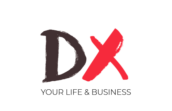Recording your payables and disbursements might seem daunting, but it doesn’t have to be. In this guide, we’ll break it down step-by-step so you can confidently manage your books of accounts and stay compliant with the Bureau of Internal Revenue (BIR) in the Philippines. If you’ve been following along, this is the continuation of our previous discussion about the procurement-to-payment process. Let’s get started!
Understanding the Books of Accounts
In the Philippines, businesses are required to maintain six key books of accounts:
1. General Journal
2. General Ledger
3. Sales Book
4. Purchase Book
5. Cash Receipts Book
6. Cash Disbursement Book
For businesses dealing in goods, the Purchase Book is a priority. For service-based businesses, nuances differ slightly, especially for VAT versus non-VAT entities. VAT-registered businesses must account for Input VAT, while non-VAT businesses should focus on gross amounts.
If this already sounds overwhelming, my Accounting Starter Digital Course simplifies the process.
Check it here 👉 https://dennismhilario.com/accounting-starter-digital-course-2/
Recording Transactions in the Purchase Book
The Purchase Book is essential for documenting purchases of goods or services critical to your operations. Here’s the information you need to record:
– Date of transaction
– Supplier name, TIN, and address
– Description of goods or services
– Invoice number
– Amount
– Input VAT (if applicable)
– Expanded Withholding Tax (EWT), if required
Example:
You purchase office supplies worth PHP 11,200 (VAT-inclusive). The accounting entry would be:
– Debit: Office Supplies Expense – PHP 10,000
– Debit: Input VAT – PHP 1,200
– Credit: Accounts Payable – PHP 11,200
For businesses subject to EWT, ensure that withholding tax is accounted for and properly documented.
Recording in the Cash Disbursement Book
The Cash Disbursement Book captures all cash outflows, such as payments to suppliers, utilities, or salaries. The following details must be recorded:
– Date of payment
– Payee’s name, TIN, and address
– Check or reference number
– Amount
– Input VAT (if applicable)
– Expanded Withholding Tax
(for services or where applicable)
Example:
You pay PHP 11,200 to settle the earlier office supplies purchase. The entry would be:
– Debit: Accounts Payable – PHP 11,200
– Credit: Cash in Bank – PHP 11,200
For VAT and EWT, include the Input VAT debit and Withholding Tax credit where applicable.
Updating the General Ledger
Once your Purchase and Cash Disbursement Books are updated, the next step is to post entries to the General Ledger. This consolidates your accounts and provides an overall picture of your financial position. Ensure every journal entry matches the ledger to maintain accuracy.
Preparing the Summary List of Purchases (SLP)
The Summary List of Purchases (SLP) is a quarterly report submitted to the BIR by VAT-registered businesses. This report is mandatory if your quarterly purchases exceed PHP 1,000,000.
The SLP must be submitted by the 25th day of the month following the close of the taxable quarter and includes:
– Supplier names
– TINs
– Total purchase amounts
– Input VAT
Reconciling the SLP with your Purchase Book is critical to avoid discrepancies during tax audits.
Using Spreadsheets and Accounting Software
To simplify the process, spreadsheets and accounting software can automate much of the work. However, unless your system is BIR-approved as loose-leaf or computerized, these tools can only be used internally. Always verify compliance to avoid penalties.
Final Thoughts
By mastering the recording of payables and disbursements, you’ll not only ensure BIR compliance but also maintain better control over your business finances.
If you have any questions, drop them in the comments below, and I’ll be happy to help! Don’t forget to share this guide and subscribe for more tips on simplifying your business processes.
Let’s make accounting simple and effective together. Until next time, stay successful!
Simplify your accounting with my Accounting Starter Digital Course—get step-by-step guidance to confidently manage your books.
Visit https://dennismhilario.com/ to book a free call, receive personalized support, and scale your business with expert guidance.
